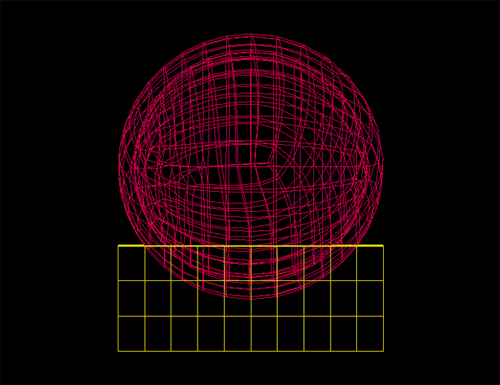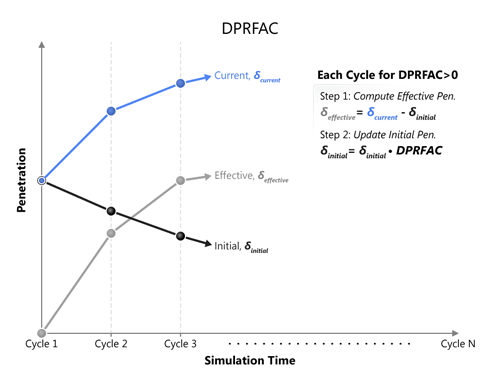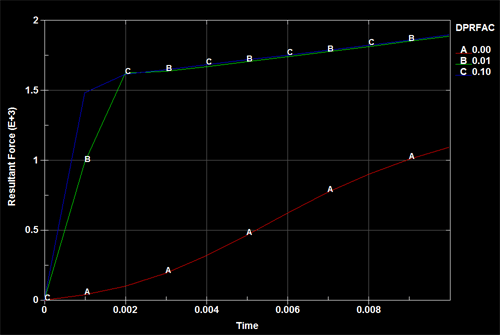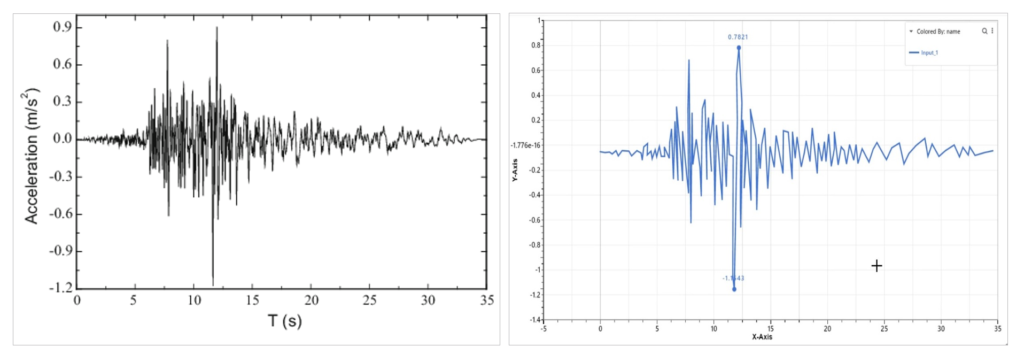Beginning LS-DYNA versions 971, a new option for SOFT=2 contact called DPRFAC in Optional Card ‘C’ in *CONTACT keyword allows transient removal of any initial penetrations. This option is useful to quickly zero out any initial penetrations rather than just to remember them. The following figure shows how the effective penetration that is used to compute the contact forces is gradually increasing and a subsequent drop in the initial penetration recorded during initialization.
To demonstrate the practical use of the DPRFAC, we can consider a problem used in interference . The prolem has a rigid hollow sphere and a foam block and there is significant initial penetration at time zero. When DPRFAC is zero and and the option IGNORE is turned on, LS-DYNA always removed the initial recorded penetration from the current penetration which results in a very small force and subsequent smaller amount of foam compression. The transient plot for the case is shown below.
Without DPRFAC (Click image to animate)

When DRPFAC is set to 0.1 (reduce the initially recorded penetration by 10%/cycle), the penetrations are eventually forced out as in interference problem which causes foam block to deform and finally assume the geometry of the rigid sphere. This is shown below.
With DPRFAC (Click image to animate)

The following is the force time history comparing a case of DPRFAC=0, DPRFAC=0.01, and DPRFAC=0.1.
Real world application would eventually be in places where we want to model a interference fit in full-scale models which are currently ignored. Consider a full vehicle which has several places where parts are press-fitted. In finite element models that exists today, if penetrations exists due to such interference, we simply use the IGNORE parameter to ignore them, which is a big advancement in itself when compared to the process of removing them manually, but in the case of DRPFAC, we will eventually be able to a capture such stress more accurately.

















